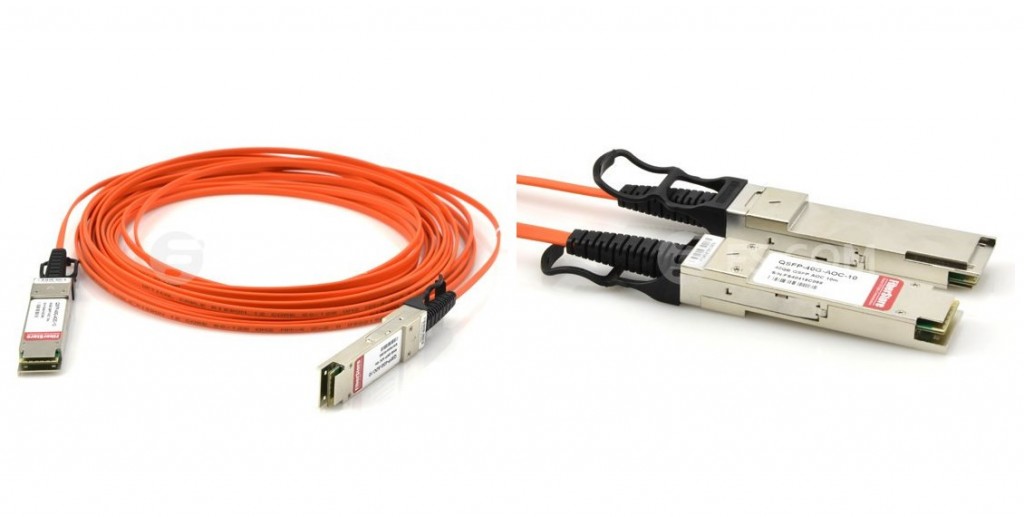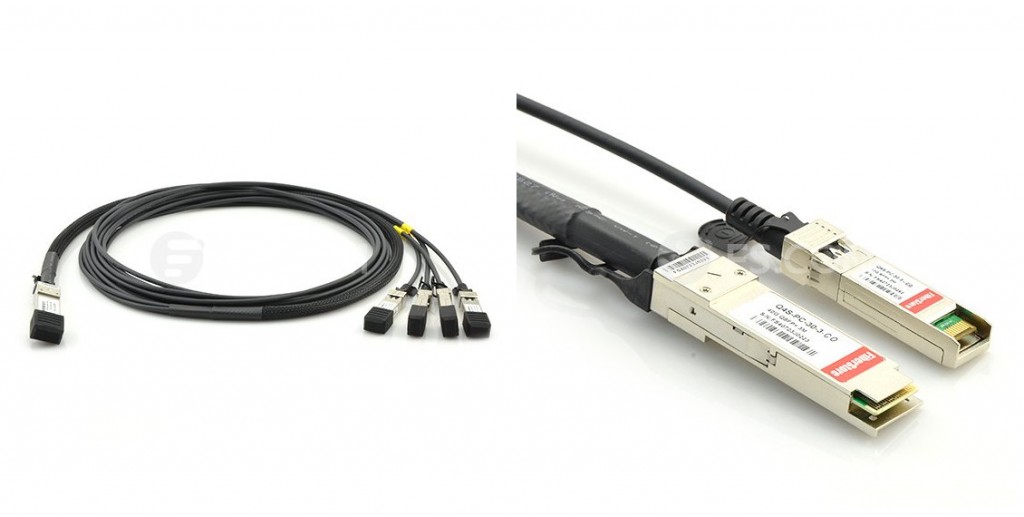Three Cabling Options for 40G Data Center
The increasing need for faster data transfer rates has contributed to the popularity of 40G networks in the market now. 40G Ethernet provides higher data rates and meet higher application needs. To deploy 40G Ethernet, different connector types to achieve network connectivity and different feasible cabling infrastructures are needed. How many cabling options are available? Several choices for you will be discussed in this article.
Active optical cable uses electrical-to-optical conversion on the cable ends to improve speed and distance performance of the cable without sacrificing compatibility with standard electrical interfaces. It is an alternative to optical transceivers, eliminating the separable interface between transceiver module and optical cable. An AOC consists of bend-insensitive multimode or single-mode fiber cable, fiber optic transceivers, control chip and modules. This integrated optical module solution removes the complicated optical fiber interface and can eliminate the separable interface between transceiver module and optical cable. Compaired to direct attach copper cable, AOC weighs less and can support longer transmission distance. However, it costs more than copper cable.
40G active optical cable for 40GbE applications is terminated with a 40GBASE QSFP+ transceiver on one end while on the other end, it can be terminated with QSFP+ connector, SFP+ connector, or LC/SC/FC/ST connector. QSFP+ AOC integrates four data lanes in each direction with 40Gbps aggregate bandwidth. Each lane can operate at 10Gbps with lengths ranging from one to 100m. It is compliant with the QSFP MSA and IEEE P802.3ba. QSFP+ AOC is designed to meet the requirements of high speed, high density and low power consumption for applications in today's data centers via optical fiber cable. The following picture shows a Cisco QSFP-H40G-AOC5M compatible 40G QSFP+ to QSFP+active optical cable.

Except choice of fiber optic cable, copper cable is also a good choice for your 40G applications. Copper cables are specially designed for short-reaches in data center. They are less expensive than fiber cables. There are several twinaxial cables available to support 40G. 40G direct attach copper cable (DAC) includes active DACs and passive DACs. Passive copper cables are prefered alternative for short-reaches in the data center. QSFP+ (quad small form-factor pluggable plus) copper cable assemblies are developed for high-density applications. They offer a cost-effective and low-power option for high speed data center interconnects up to 10 meters.
40GbE passive copper cables provide robust connections for 40G systems and have low power consumption which improves data center power consumption and thermal efficiency, which makes them ideal for 40G LAN, HPC and SAN applications. QSFP+ to QSFP+ passive copper cable and QSFP+ to 4SFP+ passive breakout copper cable are the two common types of QSFP+ cables. The picture below shows a Cisco QSFP-4SFP10G-CU3M compatible 40G QSFP+ to 4SFP+ passive copper cable.

Besides, MTP/MPO fiber cable is also a common option. The IEEE 802.3ba standard specifies MPO (multifiber push-on) connectors for standard-length multimode fiber connectivity. MTP/MPO is the designated interface for multimode 40G. With small, high-density form factor, it is ideal with higher-speed Ethernet equipment. A 12-fiber MPO connector interface can accommodate 40G, which is usually used in 40G data center. The typical implementations of MPO plug-and-play systems split a 12-fiber trunk into six channels that run up to 10 Gigabit Ethernet. 40G system uses 12-fiber trunk to create a Tx/Rx link, dedicating 4 fibers for 10G each of upstream transmit, and 4 fibers for 10G each of downstream receive. The upgrade path for this type of system entails simply replacing the cassette with an MPO-to-MPO adapter module.
40 Gigabit Ethernet can be deployed in many applications and it is of design flexibility. It can be a very cost-effective solution for those who do it right to upgrade there existent networks. MTP/MPO fiber cables and 40G QSFP+ cables are both good options for your 40G cabling. Fiberstore provides all these kinds of fiber optic cables and copper cables with competitive price and high quality. And those cables are tested in practical applications to ensure the superior performance.

